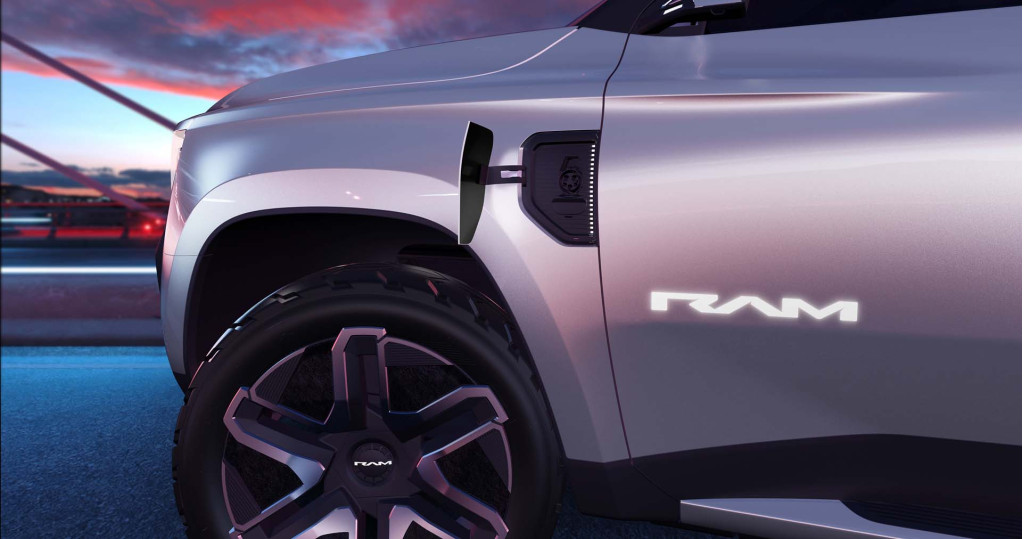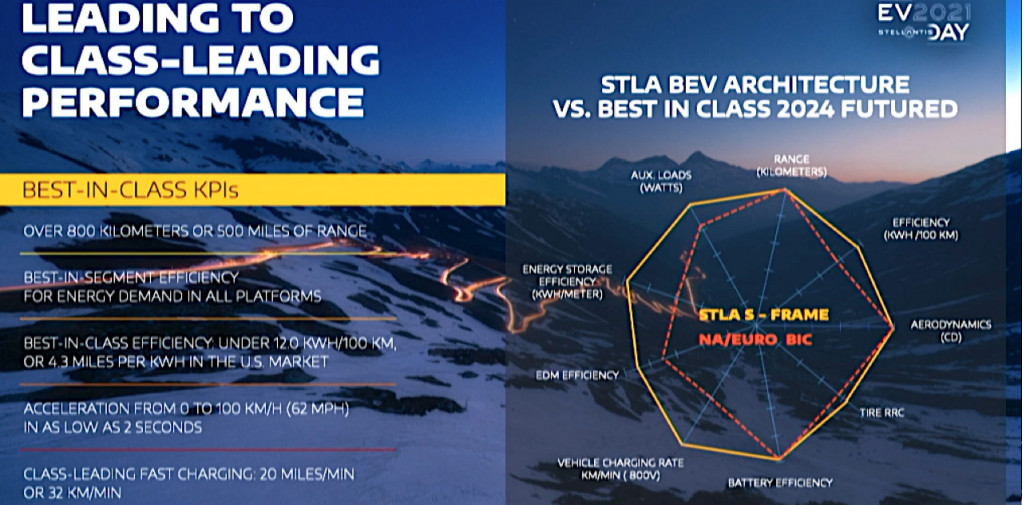As Ford and GM appear poised to go big on a range of battery electric full-size pickups, Stellantis and its Ram brand are readying more than BEVs as they shift to cleaner trucks.
The range of Ram possibilities that became a little clearer last week, surrounding the reveal of the Ram 1500 Revolution BEV Concept at CES, includes an electric light-duty truck with a gasoline-powered range extender and, perhaps, future hydrogen fuel-cell versions of its U.S. heavy-duty pickups and vans.
As reported on Thursday, Ram CEO Mike Koval stated to Green Car Reports that a range-extended version of the upcoming Ram EV “will carry all of those characteristics” of the Ram Revolution but will also offer what he described as “class-leading real-world range.”
Stellantis CEO Carlos Tavares, in a roundtable interview with journalists, including Green Car Reports, directly following the CES reveal, elaborated—and claimed what sounds to be a late-mover advantage.
“I’m taking advantage of not being the first, and having the leisure to engineer my product in a way that is going to beat the guys that are already there,” said Tavares.

Carlos Tavares
The global CEO said that Ram is looking at four different factors as it designs its electric trucks: Payload, towing, charging speed, and range. With a composite index on those four factors, it will beat everything in the market, according to Tavares.
“So far that doesn’t exist in the market,” he added, noting that existing entries all involve a higher level of compromise in particular aspects.
Range-extended means electric first
At some stages, over the past couple of years, Ram has also hinted that a plug-in hybrid truck is in the works, too. But Stellantis CEO Carlos Tavares made clear, in a roundtable interview following the reveal, that the upcoming plug-in version of the Ram is a range-extended version of the electric truck.
“A range extender is not a plug-in hybrid,” said Tavares, responding to a question asking for a little more clarification on the truck, which has been confirmed but not yet detailed. “A plug-in hybrid is something else.”

Ram 1500 Revolution BEV concept
The company hasn’t revealed anything yet about the electric truck’s production specs, let alone those of the range-extended version. Taking executive statements in context, the possibility of a plug-in hybrid Ram (with a full-size truck engine) appears to be off the table for now—leaving unclear how Ram plans to provide a long-distance towing solution with a smaller range-extending engine.
That of course has led to speculation about where the Ram’s range extender might be installed. Toward the rear of the truck and under the bed is the most likely location—with space freed up by what’s likely to be a much smaller battery pack versus in BEV versions.
A range-extended tow rig?
Very few range-extended EVs have made it to market, as they face some stark challenges. And a range-extended full-size truck used for even occasional towing seems to be up against many of them.
Any such electric truck will need to be able to tow up long grades whether in range-extended mode or not—requiring a small engine and generator capable of not falling behind on the power needed by the pickup’s electric drive system.
One of the most noteworthy examples is the BMW i3, which packed a 0.7-liter 2-cylinder gasoline engine under the rear cargo floor—roughly doubling the EV’s range, to 180 miles from 2017 on, with less than two gallons of gas. Earlier examples faced an issue in which the vehicle didn’t perform as well when it used up its plug-in charge, and simply couldn’t keep up on long grades at highway speeds.
Shocked gas-station attendant gets 1.507 gallons into the #BMW #i3 – “This is full? Really?” pic.twitter.com/gsafdhZJuT
— Bengt Halvorson (@ben_gt) March 24, 2015
Among the few other examples, Infiniti dropped plans for range-extended EVs at the core of the Nissan luxury brand’s lineup. Concerns that the vehicles wouldn’t actually be very efficient in range-extended operation may have been related to that decision.
The Karma Revero or GS-6—formerly Fisker Karma—remains one of the other true examples of a range-extended EV. It functions essentially as a series hybrid after its plug-in charge is depleted, relying on the engine to generate enough charge for the propulsion system, with the battery as a buffer.
The Chevrolet Volt, for example, wasn’t actually a range-extended EV as it engaged the engine to the drive wheels at highway speeds.

STLA platform targets – 2021 Stellantis EV Day
Ram will use a unique platform for the fully electric and range-extended truck—STLA Frame—while gasoline versions of the Ram will continue to be refined. What distinguishes STLA Frame may be that it was designed from the start to tuck a range extender and fuel tank within the frame, alongside the battery pack perhaps.
Pragmatic plug-in faces anti-ICE dogma
Tavares said that the range-extended electric truck will be an interesting case for those who are pragmatic—allowing them to go zero emissions downtown, but giving them significant range for getting to another city, perhaps while towing or hauling.
“If you are dogmatic and you say I don’t want fossil (fuel) as the entry point of my decision, then it doesn’t work, because you have an ICE inside,” said Tavares. “You may if you are dogmatic just push back on it basically, there is an ICE, it’s over, I don’t consider that.”
On that pragmatic point, it’s likely that Ram’s truck will still offer a reasonably large battery—large enough to deliver that towing ability, as well a plug-in range stepping closer to the 50 miles that California’s Air Resources Board is asking for starting in 2026, as part of the ACC II rules a number of other states—including the entire U.S. West Coast—have already signed on to.
Stellantis is already making hydrogen fuel-cell vans in Europe and aims to bring hydrogen fuel-cell technology to its U.S. heavy-duty trucks, Tavares confirmed. “It’s a possibility; the technology will be available for our Ram brand—and for the ProMaster in particular,” he said, adding that it will ultimately be the decision of Ram CEO Koval.







